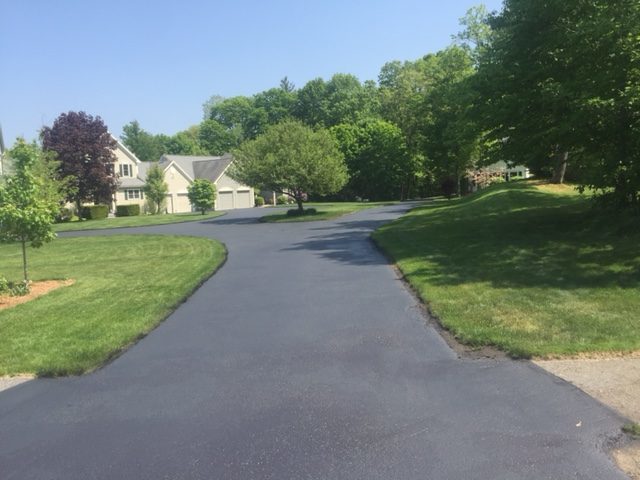Elevate Sidewalk Performance: Cold Mix Asphalt Sealing Tips
Elevate Sidewalk Performance: Cold Mix Asphalt Sealing Tips
Blog Article
Cold Mix Asphalt Vs. Hot Mix Asphalt: Which Is Right for You?

Structure Distinctions
Cold mix and hot mix asphalts differ considerably in their make-up, with distinct attributes that affect their performance and applications. Cold mix asphalt is created by emulsifying the asphalt binder with water and an emulsifying representative prior to mixing it with accumulation. This method permits the asphalt to be practical at lower temperatures, making it suitable for short-term fixings and for use in chillier weather. Warm mix asphalt, on the other hand, is manufactured at high temperature levels, usually in between 300-350 ° F, which aids to achieve better compaction and a much more durable final item. The hot mix asphalt production process includes heating up the accumulation and asphalt binder separately before integrating them at the asphalt plant.
Additionally, chilly mix asphalt has a tendency to be much less dense and much more versatile than hot mix asphalt. This versatility makes it much better suited for areas with higher levels of movement, such as driveways or roads with rush hour. On the other hand, hot mix asphalt is known for its high longevity and resistance to rutting and splitting, making it a favored option for highways and high-traffic roadways where long life is crucial.
Installment Refine Variations
The procedure of setting up cool mix and hot mix asphalt displays notable variances in their needs and procedures. In comparison, hot mix asphalt requires a more sophisticated installment process. Due to the heating requirements, warm mix asphalt setups are typically lugged out by specialists with customized devices, making certain an extra structurally sound and permanent outcome.
Sturdiness and Longevity Factors
When thinking about asphalt options, durability and long life are critical variables to evaluate for long lasting pavement performance. Hot mix asphalt (HMA) is known for its outstanding sturdiness and long life.
In regards to long life, HMA typically surpasses CMA due to its premium toughness and resistance residential properties. HMA pavements have a longer service life, calling for much less frequent repair work and maintenance, which can translate to cost savings in the long run. Additionally, HMA pavements are a lot more conveniently adjustable to fulfill particular task demands, further boosting their durability.
Cost Factors To Consider
Considering the economic implications is a crucial facet when evaluating the selection in between warm mix asphalt (HMA) and chilly mix asphalt (CMA) for sidewalk tasks. While the preliminary expense of warm mix asphalt is normally greater than that of cold mix asphalt, HMA typically offers a much more economical option in the long run due to its exceptional toughness and durability.
In enhancement to product expenses, it's vital to think about the costs associated with installation and maintenance when comparing HMA and CMA. Ultimately, the decision in between HMA and CMA need to take into account not just the first expense but likewise the long-term monetary ramifications to figure out the most economical choice for the specific pavement job.
Environmental Effect Contrast
Comparison of the ecological influences in between hot mix asphalt (HMA) recommended you read and chilly mix asphalt (CMA) exposes distinct distinctions in sustainability methods. HMA manufacturing requires heats, causing increased power usage and greenhouse gas emissions. The process also launches unpredictable natural compounds (VOCs) and harmful air pollutants (HAPs) into the environment. In contrast, CMA is produced and used at lower temperatures, lowering energy use and exhausts substantially. The lower production temperatures of CMA cause decreased gas intake and lower levels of CO2 emissions, making it a much more eco-friendly alternative.
In addition, the use of CMA often entails reusing existing asphalt pavement, advertising resource preservation and minimizing the amount of waste sent to landfills. By choosing for CMA over HMA, roadway building and construction jobs can add favorably to ecological preservation efforts.
Conclusion
To conclude, the option between cool mix asphalt (CMA) and warm mix asphalt (HMA) depends upon different variables such as make-up, setup process, resilience, longevity, expense, and ecological impact. cold mix asphalt. While CMA uses a affordable and quick remedy for minor repair work, HMA makes sure superior longevity and long life for heavy website traffic locations. Consider these aspects carefully to figure out which sort of asphalt is the appropriate selection for your paving requires

Taking into consideration the monetary implications is an important aspect when reviewing the choice in between warm mix asphalt you could check here (HMA) and chilly mix asphalt (CMA) for pavement jobs. While the initial cost of warm mix asphalt is typically higher than that of cold mix asphalt, HMA often provides a much more economical solution in the long Continue run due to its exceptional toughness and durability. cold mix asphalt.Contrast of the ecological effects in between warm mix asphalt (HMA) and cold mix asphalt (CMA) reveals distinct differences in sustainability techniques.In final thought, the option between chilly mix asphalt (CMA) and warm mix asphalt (HMA) depends on different elements such as structure, setup procedure, longevity, long life, expense, and environmental impact
Report this page